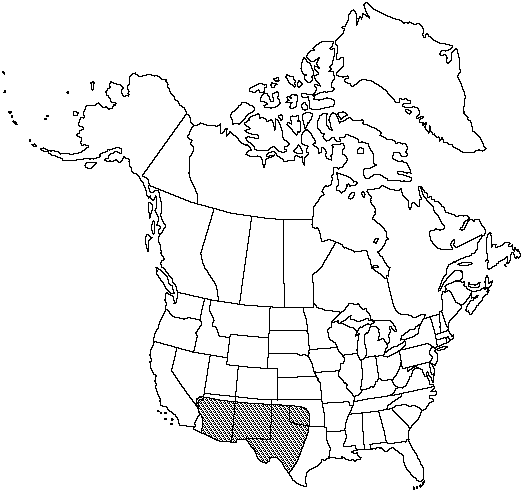Astrolepis integerrima
Amer. Fern J. 82: 57. 1992.
Stems compact; stem scales uniformly tan or somewhat darker near base, to 15 mm, margins ciliate-dentate to entire. Leaves 8–45 cm. Blade 1-pinnate to pinnate-pinnatifid, pinna pairs 20–45. Pinnae oblong to ovate, largest usually 7–15 mm, entire or asymmetrically lobed, lobes 2–7, broadly rounded, separated by shallow sinuses; abaxial scales concealing surface, lanceolate, usually 1–1.5 mm, ciliate with coarse marginal projections; adaxial scales abundant, mostly persistent, stellate to coarsely ciliate, elongate, attached at base, body mostly 5–7 cells wide. Sporangia containing 32 spores. n = 2n = 87, apogamous.
Phenology: Sporulating summer–fall.
Habitat: Rocky hillsides and cliffs, usually on limestone or other calcareous substrates
Elevation: 500–1800 m
Distribution

Ariz., Nev., N.Mex., Okla., Tex., n, c Mexico
Discussion
R. H. Hevly (1965) hypothesized that Astrolepis integerrima was produced by hybridization between A. cochisensis and A. sinuata. Recent isozyme analyses (D. M. Benham 1989) indicate, however, that Astrolepis integerrima is an apogamous allotriploid hybrid between A. cochisensis and an unnamed Mexican taxon related to A. crassifolia (Houlston & T. Moore) D. M. Benham & Windham. Two morphologic forms exist in this taxon: one with essentially entire pinnae, and one (more common in the United States) with larger, asymmetrically lobed pinnae. The former might be confused with A. cochisensis on occasion, but the abundance of adaxial scales and the larger pinnae of A. integerrima should serve to distinguish these species. The lobed form of A. integerrima is superficially similar to A. windhamii, from which it is distinguished by the abundance and greater width of adaxial scales and the asymmetrical lobing of the pinnae.
Selected References
None.